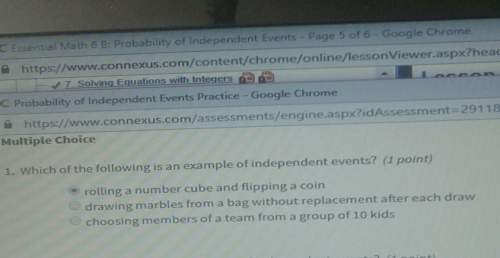
Mathematics, 01.09.2020 15:01 gabe2075
3. Let P(x, y): x + y > 5, then determine the truth value of the following a) (∃x)(∃y)P (x, y) = b) (∃x)(∀y)P (x, y) = c) (∀x)(∃y)P (x, y) = d) (∀x)(∀y)P (x, y) =

Answers: 2


Another question on Mathematics

Mathematics, 21.06.2019 12:40
The graph below shows the amount of money left in the school’s desk fund, f, after d desks have been purchased. for each new desk that is purchased, by how much does the amount of money left in the school’s desk fund decrease?
Answers: 1

Mathematics, 21.06.2019 15:30
Choose a second initial value that is 0.01 greater than the initial value from question 9. iterate it using the function, f, ten times. if necessary, you can round your results to the nearest ten-thousandth.
Answers: 2

Mathematics, 21.06.2019 18:00
Ray ce is the angle bisector of zacd, which statement about the figure must be true? mzecd-mzecb mzace « 4mzacd zace - zdcb zecd zacd save and exit
Answers: 1

Mathematics, 21.06.2019 19:50
The probability that a student graduating from suburban state university has student loans to pay off after graduation is .60. if two students are randomly selected from this university, what is the probability that neither of them has student loans to pay off after graduation?
Answers: 2
You know the right answer?
3. Let P(x, y): x + y > 5, then determine the truth value of the following a) (∃x)(∃y)P (x, y) =...
Questions


Mathematics, 18.11.2020 20:30


Geography, 18.11.2020 20:30

Mathematics, 18.11.2020 20:30

Advanced Placement (AP), 18.11.2020 20:30


Computers and Technology, 18.11.2020 20:30


Mathematics, 18.11.2020 20:30



English, 18.11.2020 20:30


English, 18.11.2020 20:30

Chemistry, 18.11.2020 20:30



English, 18.11.2020 20:30

Mathematics, 18.11.2020 20:30





